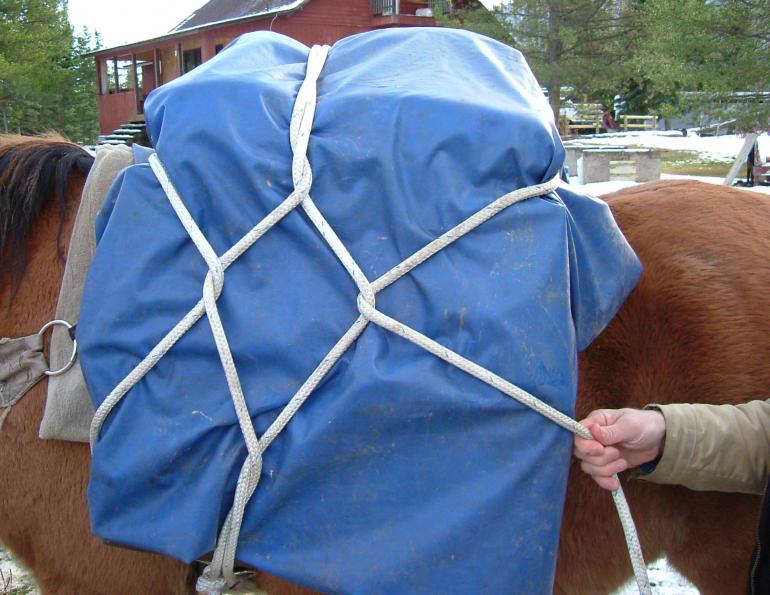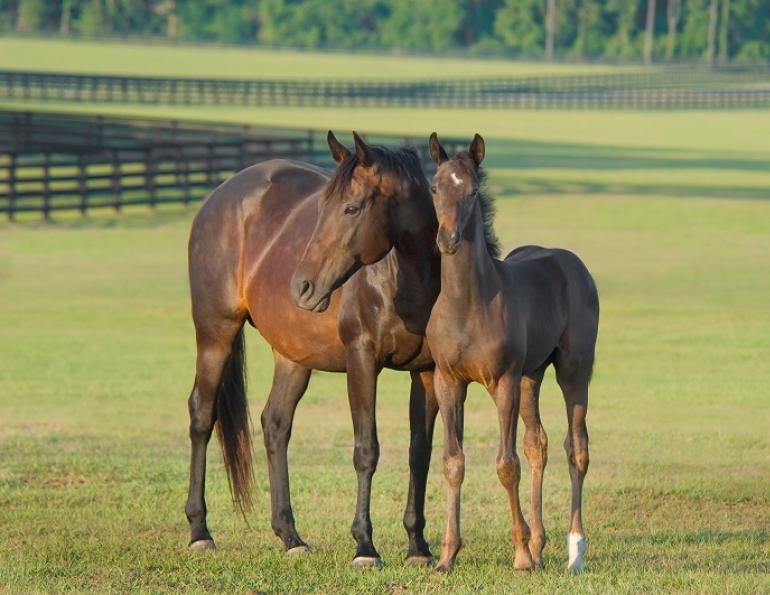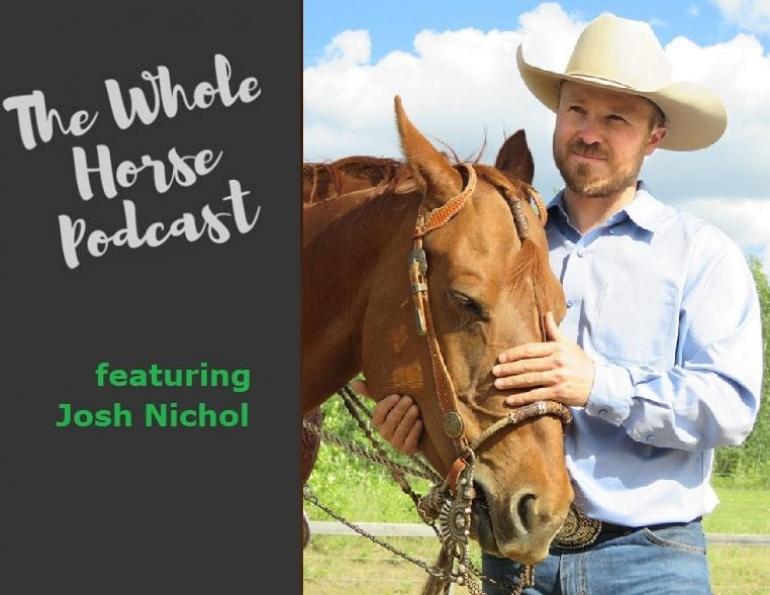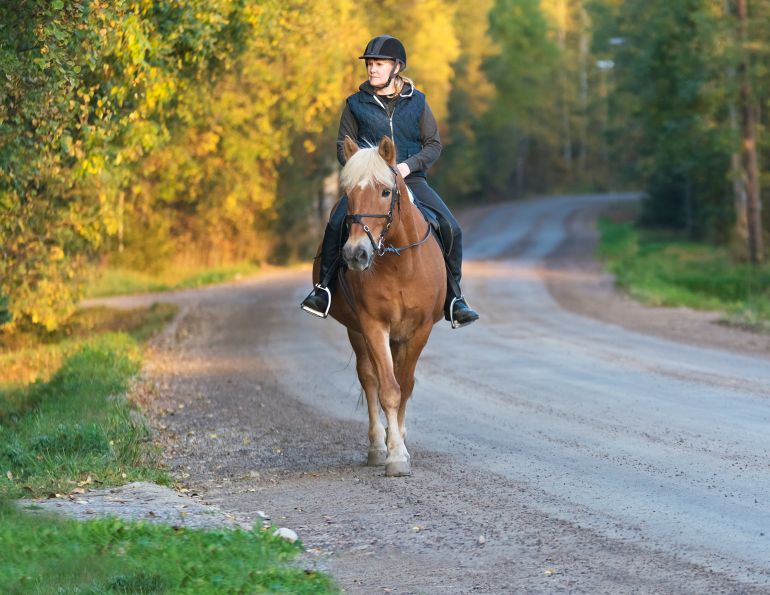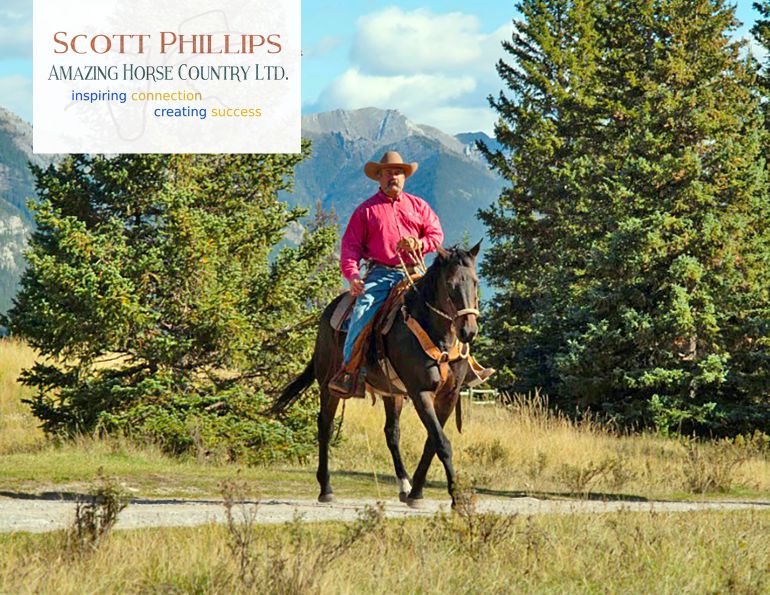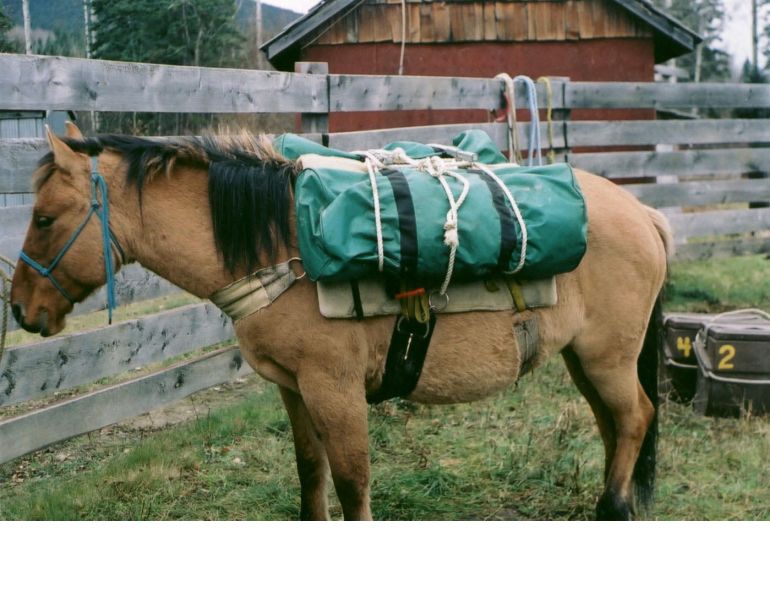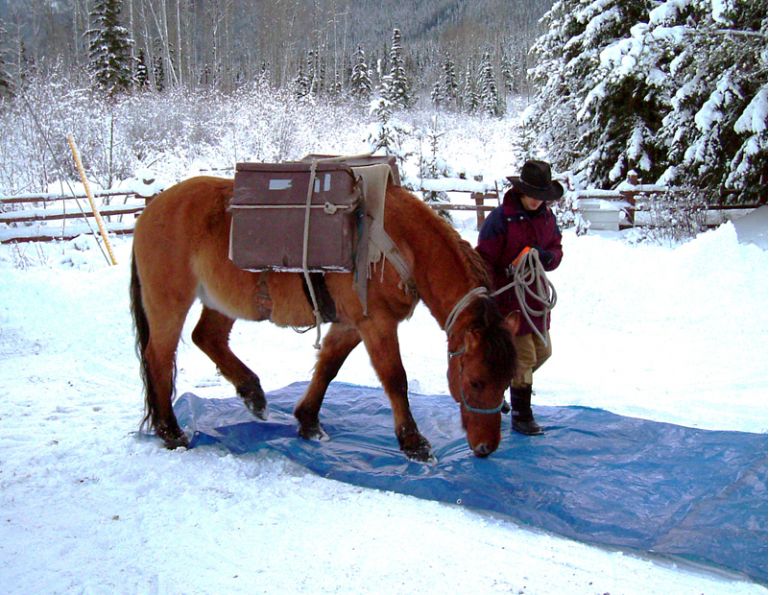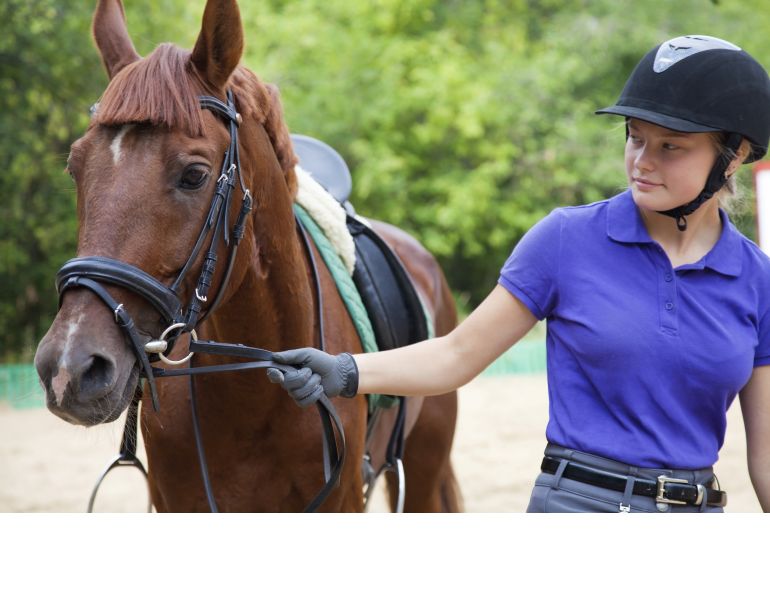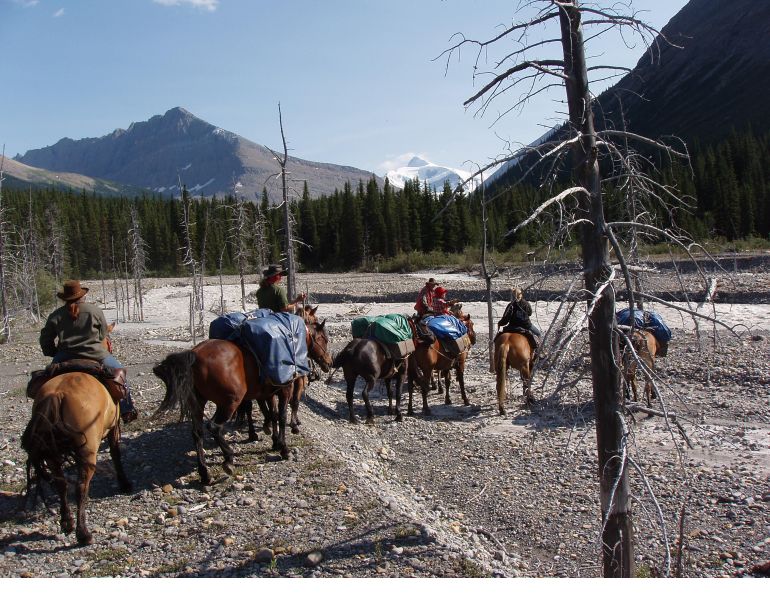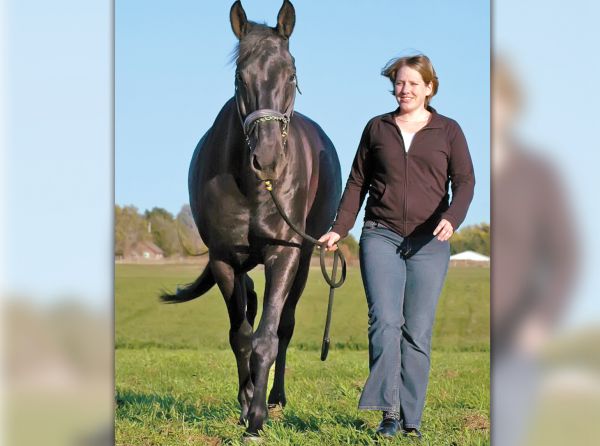By Stan Walchuk, Jr.
Adventure! If only for an hour, a day, or a week, adventure is good stuff. It makes us feel alive and takes the wrinkles out of life. Adventure with horses can be powerful medicine. I have seen adults perched with their horses on a mountain pass, eyes filled with tears, in awe of wild valleys and lonely mountain peaks that marched into the unknown.
As a kid I remember driving along a mountain road, somewhere near Grande Cache, Alberta, and watching a pack string, primed and loaded, winding its way up a slope, heading into distant mountains. The sight cast a spell over me, beckoned me, and sent shivers through me. It still does.
Is there a sense of adventure in you? If you have a horse or access to horses then you should try it. Even if, ultimately, it is a one time effort, you will learn something more about horses and much more about yourself. And you will have one more memory to carry around in your pocket.
You do not have to be Davy Crockett or John Wayne to pull it off. You simply need to learn how to hang camping stuff on your pack or saddle horse. You do not necessarily require all of the expensive gear and rigging used by outfitters. Keep in mind that outfitters have a long history and memory of details that allow them to pack many horses properly and keep things moving efficiently and safely.

You can pack up your riding saddle, walk in and set up camp, and then have your horse ready to ride.
Your first horse packing trips with one or two horses can be a learning experience and, like acquiring pack gear, can be an act of progress. A sturdy riding saddle, a couple of duffel or hockey bags, and a lash rope can do the trick. The purpose of this article is to help readers become familiar with basic pack gear and hitches. Learning the details of each hitch is not difficult and this knowledge can be acquired from books, with experienced help, or from clinics.
To pack a horse you need a pack pad, pack saddle, something to carry your gear in, and a lash rope to secure the load. A pack pad is generally thicker, longer, and wider than a riding pad. This is because a bigger pad offers the horse more protection from the gear being packed on his back and because the dead weight of a load is harder on a horse than the weight of a live rider moving with the horse. If you do not have a pack pad you can still pack your horse with a riding pad; just go easy on the weight and consider using two pads, about one inch thick total.
There are many types of pack saddles including the wooden sawbuck, the Decker pack saddle, and modern, molded plastic pack saddles. Regardless of the saddle type you use, it is very important that the pack saddle fits the horse’s back like a glove. There are pack saddles to suit a variety of pack animals, from narrow-backed mules to wide-backed draft horses. When fitting a pack saddle, ensure that the bare saddle fits the horse’s back without the pad in place. If you do not have a pack saddle you can use your riding saddle as a pack saddle. A sturdy built
Western roper-type saddle with a back cinch can also work well.
The gear that hangs on the horse is typically contained in pack boxes, pack bags, or a manty, which is simply gear laid out on a tarp and wrapped into a tight rectangular package. Likely 90 percent of horse campers these days prefer to use pack boxes as opposed to bags or manties because boxes can take more abuse, can be used as chairs and tables in camp, and protect items very well. However, I have taken many trips, especially early in my career, where we carried our gear in army-type or hockey-type duffel bags.
A top tarp draped over your gear helps protect the bags and items on top of the load. Add a 40-foot lash rope (a rope with a cinch on one end) to wrap your package on your horse and you have what you need to go.
If you have only one horse you may choose to walk in leading your saddle horse with your riding saddle packed with bags or boxes. Once you get to your camp and set it up, you then have your saddle horse ready to ride.
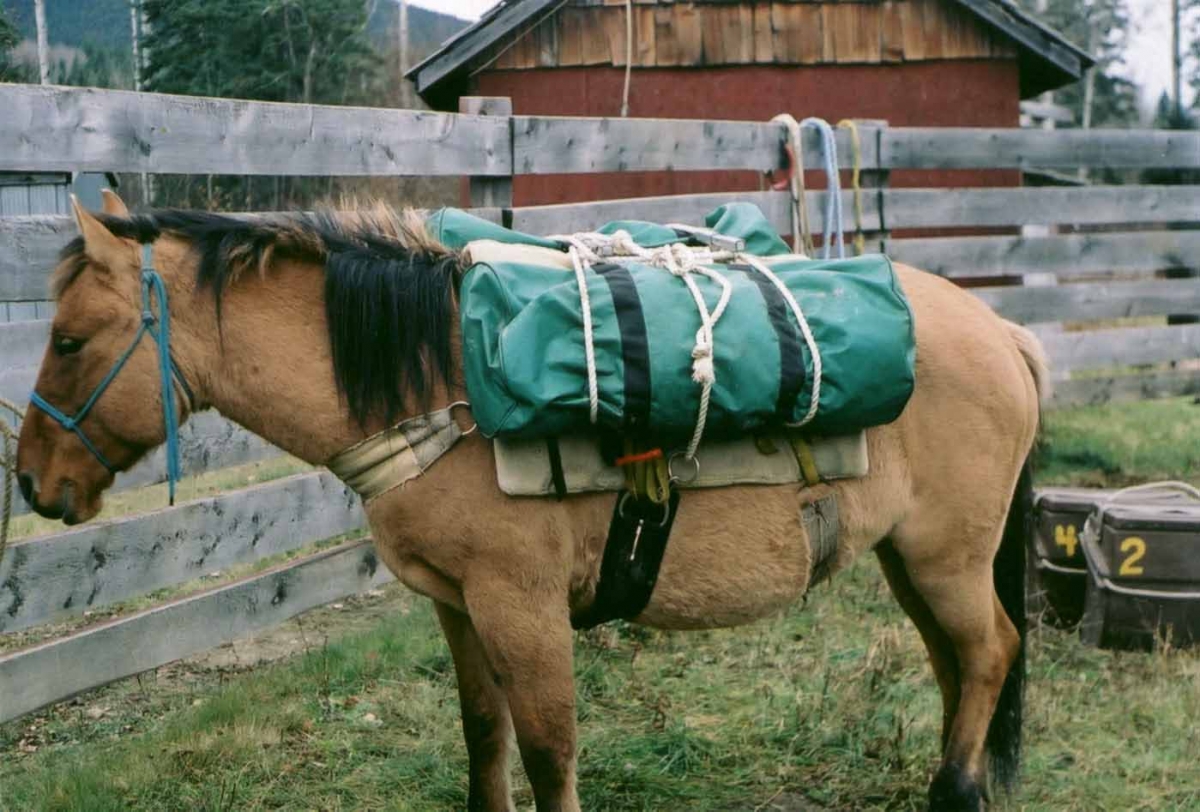
A basket hitch, a couple of duffel or hockey type bags, and a lash rope are all the gear you need to pack up and hit the trails.
Types of Hitches
Gear is secured to the horse with hitches. There are two categories of hitches. One category hangs the gear on the saddle, and includes the popular basket and barrel hitch. The other category wraps the entire load to the horse’s body. These include the single diamond, one man diamond, double diamond, squaw hitch, ring hitch, and others.
Often a combination of hitches is used.
For example, the boxes, bags, manties, or duffel bags are hung on the saddle with a basket hitch, a tent or sleeping bag is placed on top, and then the load is hitched tightly around the barrel of the horse using a diamond hitch.
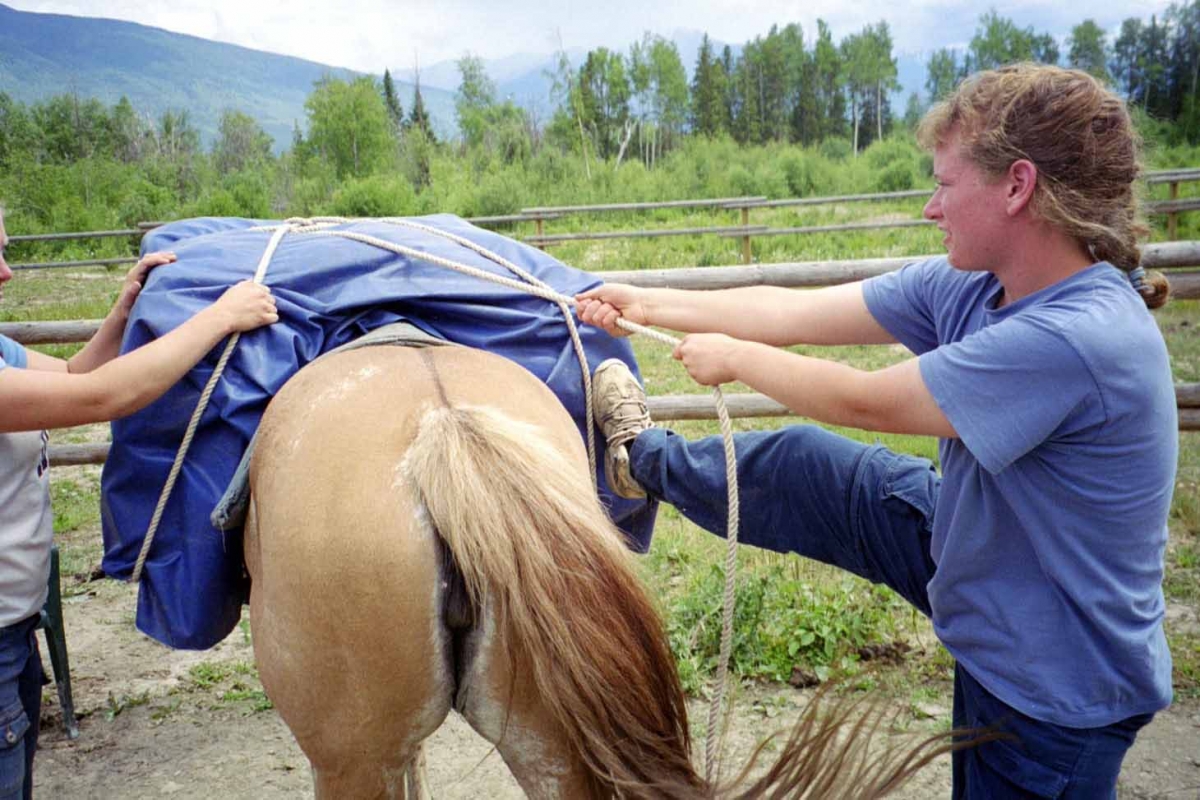
The single diamond hitch is the fastest, tightest, and most versatile hitch when thrown by two people.
The sheer number of hitches is overwhelming. There are more than 20 versions of the diamond hitch alone! But don’t worry, you really only need to know one diamond hitch and, if you choose, the barrel or basket hitch can also be handy for hanging a variety of objects from your saddle. It needs to be stressed that the type of hitch used is less important than making sure the saddle fits properly, the load has proper weight, shape, and balance, and your hitch of choice is tight and secure.
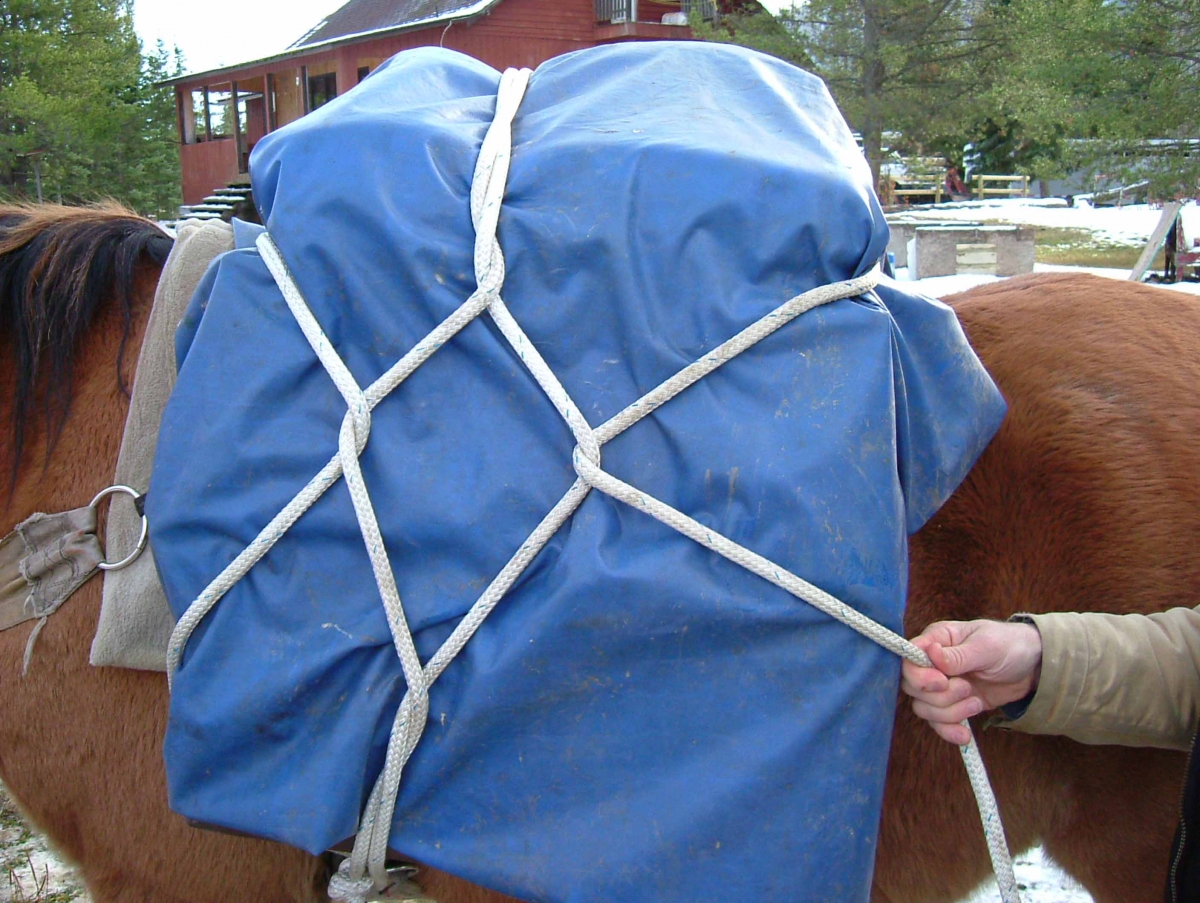
The double diamond hitch forms one diamond on each side of the load. It is great for tall horses and short people as one does not need to tie a knot up high.
Most trail riders learn a hitch from someone who has used that hitch for years. The hitch has served them well and everyone is happy. However, certain hitches do have advantages and disadvantages. For example, the one-man single diamond and the double diamond are easier to throw by one person than the standard single diamond. The double diamond is user friendly for shorter people and tall horses because one does not have to reach up top to tie a knot.
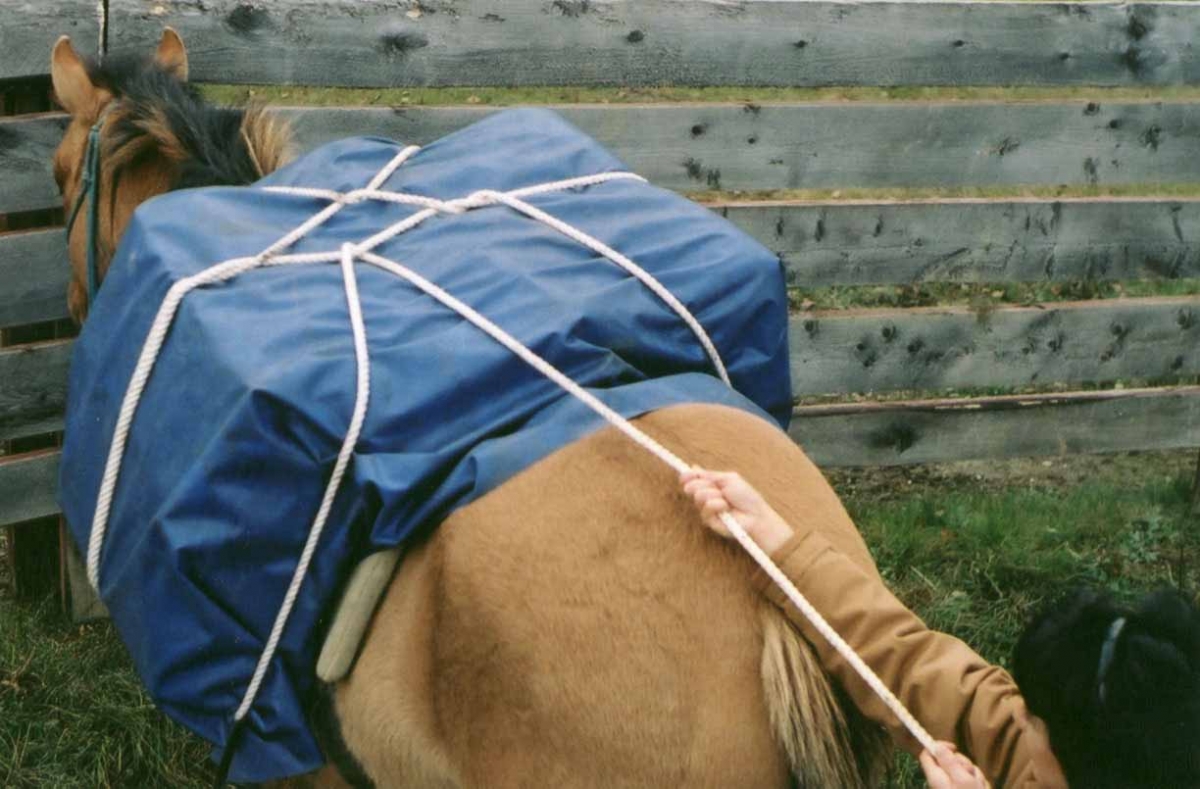
The single diamond hitch is also the quickest to remove.
We find that the standard single diamond is the most secure, most versatile, and fastest hitch with two people. In fact, it is the knot of choice for timed packing competitions. It’s fast – really fast. At our clinic, guests who learn the hitch for the first time, after a half hour of practice, commonly complete the hitch in less than 30 seconds!
I first witnessed the single diamond hitch in the late 1960s as a boy in the Yukon. I clearly recall our pack string of 20-odd rough-broke horses draped with wool army blanket saddle pads, old wooden sawbuck pack saddles, canvas wall tents, and canvas top tarps, all wrapped up in single diamonds and heading into the Pelly mountains for a one month adventure. But later, deep in the Northwest Territories (NWT), the guides of NWT Outfitters gave me a deeper appreciation for the single diamond.
These guides are masters of their trade. Two of them packing a horse are magic and poetry. Cowboys don’t do ballet – they do the diamond hitch — in perfect synchrony and fast, in mere seconds. I have seen two packers pack six horses with the single diamond hitch before another packer packed one and a half horses by himself using the one man single diamond. These guides are as brief with lingo as they are with time: “cummin atcha,” “yours,” “got it,” and then no need to talk for the rest of the day until bed time — “g’night.”
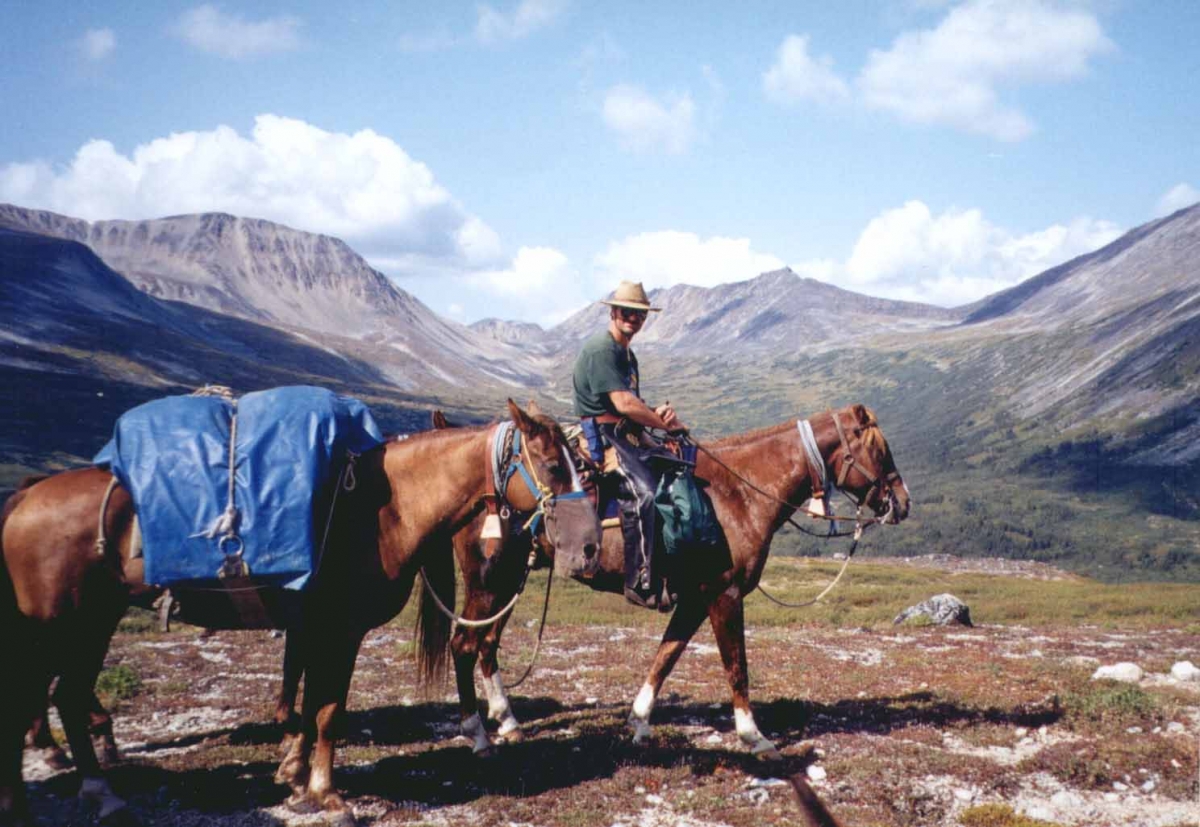
Packing up a horse for a few hours or a few days is a great way to see some new country and leave your worries behind!
Like many guides, the NWT guides were perfectionists with their loads, and you should be too. Nothing was packed unless it was absolutely needed. Weights were kept down. There was maybe a 150 pounds on a big horse. On your first trips, keep the weight down; less than 100 pounds for each horse allows for some error in poorly balanced loads or slipped loads, and you are less likely to sore your packed horse and waste time and effort packing and unpacking items and food that you did not need.
The inherent design of the single diamond also makes it easy to keep tight as it is thrown, and it is the best hitch for odd shaped loads. Finally, riders often talk about the time spent throwing hitches but forget that you need to untie the load and wrap up the lash rope when you get to camp. Most hitches unravel with the rope as a tangled mess, but with the single diamond it is all about pulling a couple of corners, unhooking the lash cinch, and the whole hitch comes free. It takes only seconds — wonderful, especially after a long day, or in the dark or the rain.
Good luck with your camping adventure!
All photos courtesy of Stan Walchuk, Jr.



